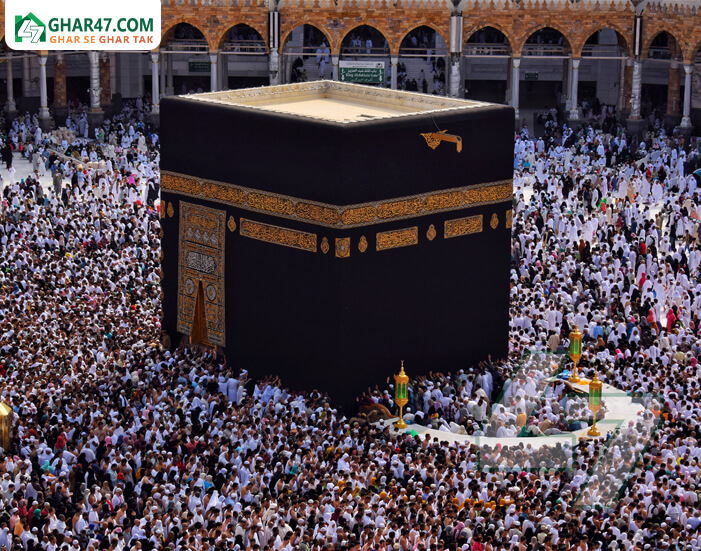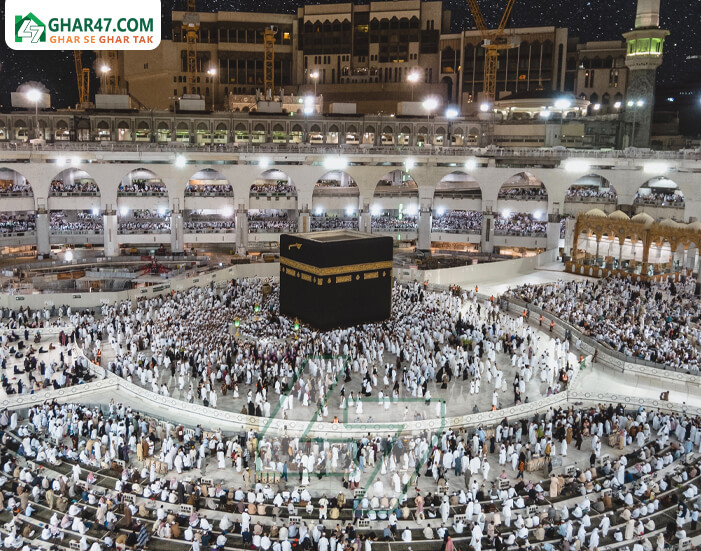
Let’s find out more about the Hajj, including who is required to perform it, its history, and how it is done!
What is Hajj?
The word for the pilgrimage, “Hajj,” means “to intend a journey” in Arabic. At any other time of the year, pilgrims are welcome to travel to Mecca to carry out the rites. The Umrah trip is not required, unlike the Hajj, which is scheduled according to set Islamic dates.
Hajj occurs in the month of Dhul Hijjah, the twelfth month in the Islamic calendar, and is one of the five pillars of Islam. From the eighth to the twelve or thirteenth of Dhul Hijjah, pilgrims conduct the Hajj over a period of five to six days. It starts two days before Eid ul-Adha and lasts through the three-day sacrifice feast. Annually, almost two to three million Muslims perform the pilgrimage.

In Islam, the Hajj is a holy pilgrimage that Muslims carry out at the Masjid al-Haram in Mecca, Saudi Arabia. All capable Muslims are obligated to perform the yearly Hajj pilgrimage at least once throughout their lifetimes.
Who is Obligated to Perform Hajj?
Now performing Hajj can not be done by everyone. Many factors come into performing Hajj that cannot be ignored. That is why many Muslims are not even able to perform Hajj even once in their lifetime. That is why certain Muslims are obligated to perform Hajj instead of it being an obligation for every Muslim. The following circumstances make one required to undertake Hajj:
First of all, becoming Muslim is a must. Hajj must not be performed by any disbeliever as it is not valid. The person has to be free. People who cannot travel due to certain reasons like being a slave who cannot go far away without their master’s permission. Therefore, slaves are not required to perform the Hajj.
The person must be able to perform Hajj financially. The person who can perform Hajj is the one who can travel to and from Mecca. In addition, he must have enough money to cover his expenses from the time he departs until he returns, including what he must spend on his wife, non-pubescent children, slaves, poor parents, and the like. This requirement applies even if the debts are not yet due or if they relate to the rights of Allah.
The person has to be responsible. If the kid obtains the consent of his guardian and completes the necessary activities on his own. The Hajj is legitimate for that youngster who has reached the age of tamyiz but is not yet adolescent. Usually, it happens after seven lunar years. The person also has to be sane. A person who is crazy is not required to perform the Hajj. That is because an insane person does not have much knowledge of what is going on so it is not obligated for them to perform.
If these conditions are met, then that Muslim is required to perform Hajj at least once in his lifetime. He is described as a disbeliever if he refuses to undertake the Hajj even if he is required to. Then he will be made to pay for this major sin.
History
There is quite a deep history that has resulted in the Hajj we perform today. It is said that our last prophet, Prophet Muhammad (SAW), created the Hajj ceremonies. But as written in the Qur’an, these rites may be traced back to the Prophet Ibrahim (AS).
It is said that Allah commanded Ibrahim (AS) to abandon his wife Hajar and son Ismail (AS) in the desert of ancient Mecca. He did as he was commanded to do. Hajar desperately sprinted seven times between the two hills of Safa and Marwah in quest of water. But in the end, she came back empty-handed.
She watched her son Ismail (AS) scraping the ground with his leg as she returned to him in despair. Due to that, water started pouring out nearby from the ground. This is the Zamzam Well, which is located in Masjid al-Haram. While undertaking the Hajj or Umrah, pilgrims go to the well to sip its water. Due to features resembling those found in traditional medicine, it gives this water healing and therapeutic capabilities.
How is Hajj Performed?
Before Hajj, men are expected to wear two white sheets that must be worn in a particular way. Women are required to cover their heads but not their faces and wear traditional attire. Women are required to cut a lock of hair, while men shave their heads.
A smaller pilgrimage called umrah takes place in Mecca on the first day of Hajj. Muslims then proceed to recreate Hagar’s route between two hills after completing their circuit of the Kaaba.

The second day of the Hajj is when the pilgrims travel to Mount Arafat. Additionally, they will ascend Jabal al-Rahma. It is the mountain where the Prophet Muhammad (PBUH) gave his last speech. Muslims then travel to the west of Arafat to Muzdalifa later in the day.
Muslims conduct one last cycle about the Kaaba during the final three days of Hajj, which coincide with Eid ul-Adha. They also hurl stones in Mina and take off their Ihram during this period. Over the course of the three days of Eid ul-Adha, Muslims complete the Hajj journey. They also perform the sacrificing of cattle. They give out portions of the meat to the underprivileged, in accordance with Islamic custom.
There you have it: a thorough analysis of Hajj, Islam’s fifth pillar. Hopefully, this information helped you learn more about Hajj and its significance. If you liked what you read, explore more of our online writing on our website and share it with your friends!
